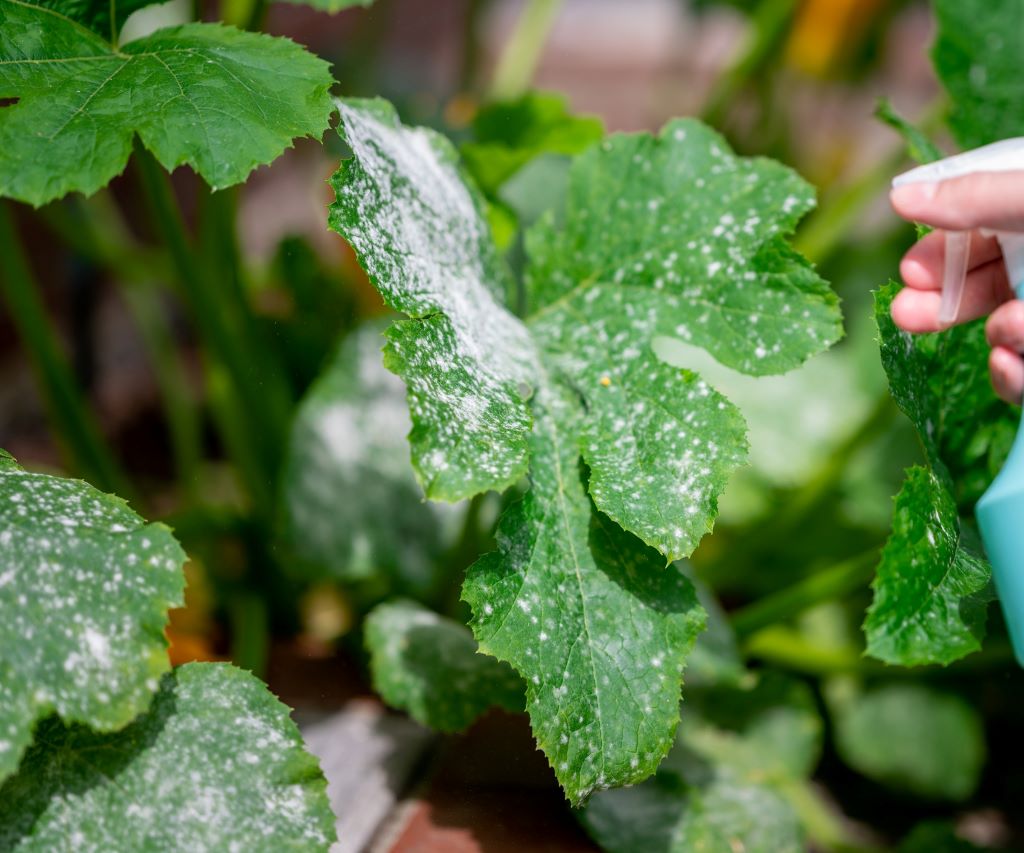White fungus problems can quickly turn a thriving garden into a gardener’s nightmare. Fortunately, nature provides simple solutions that work effectively without harsh chemicals. At Alices Wonderland Nursery, gardening experts have long recommended baking soda as a powerful ally against fungal issues. This common household ingredient offers a safe, affordable way to combat white fungus while protecting your plants and soil health.
Many gardeners discover white cotton-like growth appearing on their plant soil surface or around plant stems. This alarming sight often indicates fungal overgrowth that requires immediate attention. However, before reaching for expensive commercial fungicides, consider the remarkable effectiveness of baking soda solutions.
Understanding the science behind baking soda’s antifungal properties helps gardeners appreciate why this simple solution works so well. Additionally, learning proper application techniques ensures maximum effectiveness while avoiding potential plant damage. The alkaline nature of baking soda creates an environment where most fungi cannot survive or reproduce effectively.
Understanding White Fungus in Garden Environments
White fungus typically appears as fluffy, cotton-like masses on soil surfaces or plant tissues. These fungal organisms thrive in warm, humid conditions with poor air circulation. Most white fungi are saprophytes, meaning they feed on decaying organic matter in soil.
Common types include powdery mildew, white mold, and various species of soil-dwelling fungi. While some fungi benefit soil ecosystems, excessive white fungal growth often indicates imbalanced growing conditions. White fungus in soil frequently develops when moisture levels remain consistently high without proper drainage.
Furthermore, overwatering creates perfect breeding conditions for problematic fungi. Poor soil drainage, inadequate sunlight, and overcrowded plantings also contribute to fungal problems. Therefore, identifying the underlying causes helps prevent future outbreaks while treating current infections.
The Science Behind Baking Soda as a Fungicide
Sodium bicarbonate, commonly known as baking soda, disrupts fungal cell walls through pH manipulation. Most fungi prefer slightly acidic environments with pH levels between 5.5 and 6.5. However, baking soda raises the pH to alkaline levels, creating hostile conditions for fungal growth.
Research conducted by Cornell University demonstrates that baking soda solutions effectively control various plant fungal diseases. The alkaline environment created by sodium bicarbonate prevents spore germination and inhibits mycelial growth. Additionally, baking soda draws moisture from fungal cells through osmotic pressure, effectively dehydrating harmful organisms.
The mechanism works by altering the surface pH of treated areas. This pH change disrupts the fungi’s ability to absorb nutrients and maintain cellular integrity. Therefore, regular applications can eliminate existing infections while preventing new fungal establishment.
Preparing the Perfect Baking Soda Solution
Creating an effective baking soda fungicide requires precise measurements and proper mixing techniques. The standard recipe combines one teaspoon of baking soda with one quart of lukewarm water. However, adding a few drops of liquid dish soap improves the solution’s adherence to plant surfaces.
Mix ingredients thoroughly until the baking soda completely dissolves. Undissolved particles can concentrate on plant leaves, potentially causing burn damage. Additionally, using lukewarm water helps dissolution while preventing temperature shock to sensitive plants.
Some gardeners enhance the solution by adding horticultural oil or neem oil. These additions provide extra antifungal properties while improving spray coverage. However, start with the basic recipe to test plant tolerance before adding additional ingredients.
Application Methods and Timing
Proper application timing maximizes baking soda solution effectiveness while minimizing plant stress. Apply treatments during early morning or late afternoon hours when temperatures are cooler. Avoid spraying during peak sunlight hours, as wet leaves under intense sun can develop burn spots.
Thoroughly spray all affected areas, including soil surfaces and plant foliage. Pay special attention to areas with visible white fungal growth. Additionally, treat surrounding healthy areas to prevent fungal spread. The solution should coat surfaces evenly without creating excessive runoff.
Weekly applications typically provide adequate control for most white fungus problems. However, severe infections may require more frequent treatments initially. Monitor treated areas closely and adjust application frequency based on fungal response and weather conditions.
Safety Considerations and Best Practices
While baking soda solutions are generally safe, certain precautions ensure optimal results without plant damage. Test the solution on a small plant area before widespread application. Some sensitive plants may experience leaf burn or discoloration from concentrated baking soda solutions.
Never exceed recommended concentrations, as excessive sodium can accumulate in soil over time. High sodium levels can interfere with nutrient uptake and damage soil structure. Therefore, alternate baking soda treatments with plain water applications to prevent buildup.
Additionally, avoid applying solutions to drought-stressed plants. Stressed plants are more susceptible to chemical damage, even from mild treatments. Ensure plants are adequately watered before fungicide applications.
Complementary Prevention Strategies
Effective white fungus control extends beyond chemical treatments to include cultural practices that discourage fungal development. Improving air circulation around plants reduces humidity levels that fungi require for growth. Space plants appropriately to allow air movement between specimens.
Proper watering techniques also play crucial roles in fungal prevention. Water plants at soil level rather than overhead to keep foliage dry. Additionally, water early in the day so plant surfaces dry completely before evening temperatures drop.
According to the University of California Agriculture and Natural Resources, maintaining proper soil drainage prevents many fungal problems. Amend heavy clay soils with organic matter to improve drainage and reduce waterlogged conditions.
Alternative Natural Fungicide Options
While baking soda solutions work excellently for white fungus control, other natural options provide additional tools for comprehensive fungal management. Hydrogen peroxide solutions offer strong antifungal properties and can be alternated with baking soda treatments for enhanced effectiveness.
Apple cider vinegar creates acidic conditions that can suppress certain fungal species. However, use vinegar solutions carefully, as excessive acidity can harm beneficial soil organisms. Milk solutions also show promise against powdery mildew and other white fungal diseases.
Essential oils such as tea tree oil, oregano oil, and thyme oil possess natural antifungal compounds. These concentrated plant extracts can be diluted and added to baking soda solutions for enhanced effectiveness.
Long-term Soil Health Management
Sustainable white fungus control requires attention to overall soil ecosystem health. Healthy soils with balanced microbial populations naturally resist harmful fungal overgrowth. Therefore, focus on building soil organic matter through compost additions and organic mulching.
Beneficial microorganisms compete with harmful fungi for resources and space. Introducing beneficial bacteria and fungi through compost teas or commercial microbial inoculants can help restore soil balance. Additionally, avoiding synthetic fertilizers that can disrupt soil microbial communities supports long-term fungal control.
Regular soil testing helps monitor pH levels and nutrient balances that affect fungal development. Most vegetables and ornamental plants prefer slightly acidic to neutral soils, which naturally discourage many problematic white fungi species.
Conclusion
Baking soda solutions offer gardeners an effective, economical method for controlling white fungus problems without relying on harsh chemical fungicides. The science supporting sodium bicarbonate’s antifungal properties demonstrates why this simple household ingredient works so well against various white fungal diseases.
Success requires proper solution preparation, correct application timing, and integration with good cultural practices. Additionally, understanding the underlying causes of fungal problems helps prevent future outbreaks while maintaining healthy garden ecosystems.
Regular monitoring and prompt treatment with baking soda solutions can keep white fungus problems under control. However, remember that sustainable fungal management requires attention to overall plant health, proper growing conditions, and soil ecosystem balance.
Frequently Asked Questions
How often should I apply baking soda solution for white fungus control? Apply baking soda solution weekly during active fungal growth periods. Severe infections may require twice-weekly applications initially, then reduce frequency as fungal growth decreases. Monitor treated areas and adjust timing based on fungal response and environmental conditions.
Can baking soda solution harm my plants or beneficial soil organisms? When used at recommended concentrations, baking soda solutions are generally safe for most plants. However, excessive sodium can accumulate over time and affect soil health. Test on small areas first and alternate treatments with plain water to prevent sodium buildup.
What concentration of baking soda should I use for maximum effectiveness? The standard effective concentration is one teaspoon of baking soda per quart of water. Avoid using stronger concentrations, as they can damage plant tissues and accumulate harmful sodium levels in soil. This ratio provides adequate antifungal activity without plant toxicity.
Does baking soda solution work on all types of white fungus? Baking soda solutions effectively control many white fungal diseases, including powdery mildew and various soil-dwelling fungi. However, some persistent fungal species may require additional treatments or alternative approaches. Combining baking soda with other natural fungicides often improves results.
When is the best time of day to apply baking soda fungicide? Apply baking soda solutions during early morning or late afternoon when temperatures are cooler and humidity is lower. Avoid midday applications when intense sunlight can cause leaf burn on wet foliage. Early morning applications allow surfaces to dry completely before evening moisture returns.
Read More:
TOP PLACES TO SEE IN VERMONT IN FALL
WHAT TO PLANT IN LATE SPRING: TOP CHOICES FOR A BOUNTIFUL HARVEST



